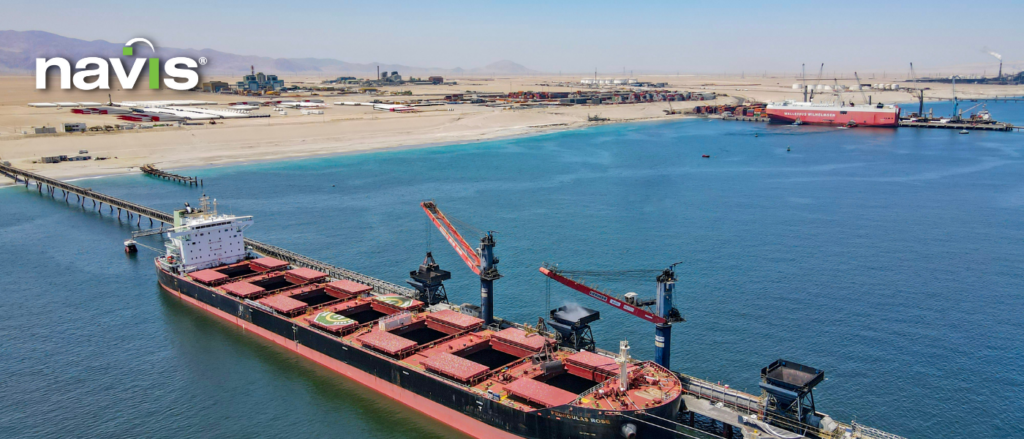
Navis, the provider of operational technologies and services that unlock greater performance and efficiency for leading organizations throughout the global cargo supply chain, has announced Terminal Graneles del Norte (TGN) will implement the N4 terminal operating system (TOS) at its greenfield site, which is slated to become operational by late 2023. The selection of Navis’ industry-leading TOS is part of TGN’s endeavor to become the first semi-automated, multimodal terminal handling bulk cargo.
TGN, a subsidiary of port operator Puerto Angamos, is located in Mejillones Bay at the heart of Chile’s mining region and close to the most important copper district in the world. Built with the distinct purpose of servicing the requirements of mining and energy producers, the terminal aims to become a strategic partner for the mining and electrical industry, through the safe and efficient handling of their products. With its rapid access via train and truck – which connects the port to the principal mines in Chile, Argentina and Bolivia, without the need to pass through populated areas – the terminal is well positioned to become the natural gateway to the Pacific in South America.
The terminal selected N4 to help redefine how bulk cargo is handled around the world. With a focus on bulk cargo operations, largely moving Chile’s copper concentrate, TGN has the capacity to handle up to 4.0 million tons of copper annually. Using rotainers – innovative rotating container technology – and revolving spreaders, which are becoming more common for moving bulk materials, TGN engaged Navis for its automation capabilities. N4 will act as the brains of the terminal by integrating and enhancing existing technologies as well as connecting to the gate for receival of cargo, providing guidance on loading sequences, stowage and grounding scenarios, directing stacking crane activity and more. With the addition of N4, TGN will substantially increase productivity and storage capacity by stacking cargo in fully sealed rotainers vs massive piles of raw materials in the yard. This will not only revolutionize how bulk materials are stored/transported, but will allow TGN to reduce particulate emissions and ensure safer and more environmentally friendly operations.
“Ports which handle bulk materials are confronted with critical ship-to-shore transfer problems, which are often much more complex than those involving the loading or unloading of general cargo or containers,” said Kim Kuesel, General Manager for the Americas, Navis. “With most dry bulk commodities prone to spillage and dust pollution, there are not only operational challenges, but environmental factors that must be taken into consideration. TGN is looking beyond how it has always been done and taking an innovative approach that will truly mark a ‘before and after’ for how bulk cargo is handled around the world. Automation will play a critical role as the terminal continues working towards more efficient and resourceful operations and we’re excited to be in on the ground floor, providing streamlined and efficient solutions to meet their every need.”
“TGN will be the first terminal in the world with a breakthrough operation for bulk cargo, using automation, cutting edge technology and equipment, with a focus on efficiency as well as sustainability,” said Bernardo Sedini, Terminal Manager for Terminal Graneles del Norte. “We are happy to partner with companies like Navis who has proven time and time again its ability to alleviate the automation implementation challenges that many terminals face and will enable us to improve operational decision making to get ahead of the market.”